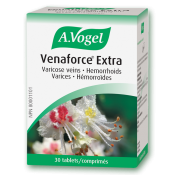What are heavy legs?
“Heavy legs” is a term borrowed from the French and it describes one of the sensations felt by individuals who may have an underlying venous insufficiency condition (e.g. poor venous return, as in varicose veins). The sensation can be accompanies by pain and swelling of the legs. It primarily affects older people, as children who travel don’t appear to be at risk of DVT.
DVT is the result of a blood clot in deeper veins of the legs. Clotting is a normal physiological mechanism that prevents you from bleeding to death. However, conditions where blood is pooled (and inflammation exists), can precipitate the formation of clots (i.e. thrombi). If the thrombus is attached to the vein, blood flow is compromised, leading to pain. If the thrombus dislodges, it can traveled in the blood to the heart and into the lungs, where it can clog the lungs and result in PE.
Those at risk for clotting include people who have had a recent surgery, some blood disorders, pregnancy, hormone therapy and birth control pill, being over the age of 60, and sitting for long periods of times.
Why is it often associated with long-haul flights?
This is associated with long-haul flights because people are confined to such small spaces for many, many hours at a time. As airlines try to maximize their profits, seating space keeps getting smaller and smaller. Also, new security measures discourage people from walking about the cabin. However, it is true that airplanes often encounter unexpected turbulence, and as a security and safety measure it is important that passengers be seated with their seat-belts on.
Despite all this, don’t hesitate to get up when the seat belt sign isn’t on and walk about the cabin—go to the washroom or to the galley; strike up a conversation with a fellow passenger or flight crew—they can be quite lovely!
What are the symptoms?
The symptoms are varied. The common ones are “heaviness”, cramping, burning, or even painful calves in addition to swelling of the legs. Younger people may not experience the swelling, but may have a more pronounced sensation of “heaviness”. If you experience this do not be alarmed, but if you are over the age of 60, and/or if you have some of the associated risk factors mentioned above (including smoking, alcohol consumption, and a diet high in meats and fats), then you speak with a qualified healthcare provider about your risks and your options.
I do not wish to scare the readers, but I do intend on providing some education. Knowledge can save lives! If at any point in time shortness of breath and/or chest pain are also experienced, seek urgent medical attention, as this can be a sign of a PE (and not just a heart attack).
What are 5 tips to avoid heavy legs and/or DVT on a plane?
- Hydration: it is important to drink water during your flight, as dehydration can cause your blood vessels to narrow. For people with higher risk of developing DVT, it would be prudent to avoid coffee and alcoholic beverages during the flight.
- Exercise before the flight: this includes walking around the terminal, as well as doing a few squats and stretches (don’t worry about looking a bit funny, your health is more important). If you cannot squat, try sitting down and standing up a few times. When you sit down, extend your knees fully and brings your toes up, then point them away from you; repeat this a few times. If you’re taking a connecting flight, do this while you wait.
- Exercise during the flight: walk about the cabin, stretch your legs, shake them up. It may be a good idea to bring with you a tennis ball or a stress ball that you can use to roll underneath your feet—just remove your shoes. This is a technique used by people with plantar fasciitis, but it can help relieve some pain. In a seated position you may firmly press the tip of your toes against the floor, bring the back to a neutral position (this is similar to your standing on the tip of your toes, but you’re doing it from a seated position)—the resistance against the floor of the cabin will allow the calf muscles to contract and help with venous blood return. Finally, massage your legs with an upward stroke.
- Compression stockings: if you don’t have a pair, regular socks may do the trick as long as they keep the legs compressed. The trick is to prevent blood from pooling, but this will only work if you complement it with walking and other mild exercises that promote leg muscle contraction and venous blood return.
- Herbal companions: as is the case for varicose veins, Ruscus aculeatus (butcher’s broom) and Aesculus hippocastanum (horse chestnut), are two medicinal plants with some evidence to support their use in venous insufficiency. A licensed naturopathic doctor will provide you with more information. Horse chestnut in particular comes in liquid as well as in gel form. The gel form can be applied topically over the legs, massaging the calves in an upward motion.
- Bonus: seek medical advise from a qualified healthcare provider about other options, and, if you have risk factors, what to do in the case of case of an emergency—although preventive medicine is the best treatment option!





